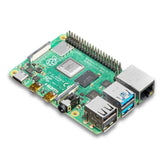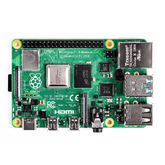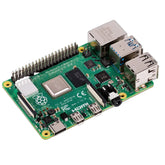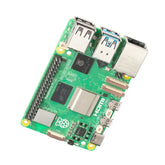How to access raspberry pi using SSH and putty
Summary
Unlock the full potential of your Raspberry Pi with our comprehensive guide on SSH and PuTTY! Delve into the essentials of remote Pi access, from setting up SSH on your Raspberry Pi to seamlessly connecting with PuTTY. Discover the power of administering your Pi remotely and gain control with ease. Our step-by-step walkthrough ensures a smooth journey into the world of SSH and PuTTY, offering you unparalleled access and convenience. Elevate your Raspberry Pi experience now! Read on to revolutionize the way you interact with your Pi and unleash its true potential. Your adventure into seamless remote administration starts here!
The advent of the Raspberry Pi single-board computer has yielded innovative new ways for hobbyists and professionals alike to leverage computing technology. Its compact size, affordability and versatility have made the Pi immensely popular across various industries. However, the Raspberry Pi's greatest strength also poses a challenge when it comes to accessing your Pi without having a dedicated monitor, keyboard, and mouse connected to it at all times. This is where understanding remote access protocols like SSH can empower even greater innovation with the Raspberry Pi.
This guide will provide an overview of SSH as well as step-by-step instructions for installing and using PuTTY to remotely administer your Raspberry Pi from another computer.
An Introduction to SSH and Remote Pi Access
Allowing remote command line access to your Raspberry Pi via SSH introduces additional flexibility in how you can deploy and use your Pi. For example, you can connect wirelessly to a Pi functioning as a low-power server or IoT device from anywhere there is network connectivity. Alternatively, SSH can save you the costs and clutter associated with attaching peripheral devices for local access.
SSH, or Secure Shell Protocol, facilitates encrypted connections between networked devices. This adds critical security and data integrity assurances when accessing a computer remotely. On the Raspberry Pi, the SSH server software is disabled by default. Enabling SSH opens Pi TCP port 22, through which remote connections can be established.
PuTTY is a popular free-to-use SSH client for Windows operating systems. It enables convenient graphical access to the Pi terminal without the need to run command line operations from Windows. With PuTTY installed on your workspace computer, you can remotely access and command a Raspberry Pi device on the same local network or hosted online over the internet.
Setting Up SSH on the Raspberry Pi

The connectivity capabilities offered by enabling SSH access on a Raspberry Pi device yield greater implementation flexibility. However, SSH increases the risk of unauthorized control over your device and data. As such, properly configuring SSH by changing default credentials is paramount.
Raspberry Pi OS contains SSH server software in its repository, but it is disabled out of the box for those models (prior to Pi 4) lacking on-board Wi-Fi networking. Enabling SSH requires editing a configuration file from the terminal or Raspberry Pi desktop preferences.
To get started, launch Raspberry Pi configuration from the preference menu. In the interfaces tab, toggle the SSH switch to the on position. Alternatively, entering the following from the terminal will achieve the same:
```bash sudo raspi-config ```
Select Interfacing Options > SSH > Enable
Once SSH is active, change the default password for the user “pi” before establishing remote connections:
```bash passwd ```
Changing credentials makes brute force hacking attempts considerably more difficult while allowing easy memorability.
With SSH enabled and updated security settings in place, take note of your Raspberry Pi device’s local IP address. This is required later for pairing with PuTTY from your remote workspace computer.
Setting Up Remote Desktop Access with PuTTY
PuTTY is a free, open source SSH client for Windows frequently hailed for its terminal emulation and GUI accessibility. Downloading and installing PuTTY requires just a few quick steps before remotely accessing your Raspberry Pi.
First, go to the official PuTTY download page and acquire the installation file. It is quite small at just over 700KB. After downloading the .msi installer bundle, open the executable file. You can also opt to save the .msi package for later offline installation access.
The PuTTY installation wizard will guide you through the process with just a few prompts and confirmations along the way. Default settings are appropriate for most scenarios. Once completed, PuTTY configuration for SSH is stored in the Windows registry. This allows seamless invocation of stored sessions without any mandatory parameters.
Accessing Pi SSH Via PuTTY

With SSH enabled on the target Raspberry Pi and PuTTY set up on your remote Windows computer, connecting the two over a LAN or WAN is straightforward. Launch PuTTY from your Windows machine. Typically the shortcut added to your start menu search provides the fastest access.
With the PuTTY configuration window open, begin entering the local IP address of your Raspberry Pi in the host name field. IP addresses take the form xxx.xxx.xxx.xxx. An example could be 192.168.1.177.
If you are unsure of your Raspberry Pi IP address, running the terminal command ```ifconfig``` on the Pi supplies this information. With the IP address of your Pi entered under host name in PuTTY, connectivity can be attempted through the SSH protocol by enabling the radio toggle. Then click open at the bottom of the window to initiate a remote SSH session. If connecting for the first time, PuTTY will provide a security alert that the host cannot authenticate the session.
This is expected behavior; select yes to continue connecting but cache the host key going forward. Next, enter the SSH login credentials when prompted for user name and password. By default this is the pi user account with the password you updated earlier when enabling SSH. Congratulations, you now have remote terminal control over your headless Raspberry Pi via PuTTY!
Administering Your Pi Remotely Through SSH
With a fully authenticated SSH session running between the Pi device and your Windows controller computer, remote command execution opens up tremendous potential utility. Anything executable from the native terminal environment can now be controlled from a keyboard and cursor thousands of miles away.
Basic examples include running updated system configurations with ```sudo apt update && sudo apt upgrade```, transferring program or project files via ```scp```, and even streaming real-time camera feed with desktop viewers like VLC. More advanced use cases cover everything from industrial automation to RPi VPN deployments and diskless cluster computing.
By tunneling SSH outside a local network, Raspberry Pis can be transformed into networked servers accessible from the Internet securely with encryption. Setting up port forwarding on routers extends the accessibility of your project. While in-depth network configuration exceeds the scope here, the capabilities are virtually boundless. In short, any program or application which leverage a Linux command line interface can be accessed and manipulated in real time over an SSH connection from a remote location.
Conclusion:
Accessing a headless Raspberry Pi via SSH radically expands upon deployment flexibility and utility thanks to its encryption, security and ubiquity across platforms. Whether connecting over a LAN inside a home, business, or lab environment, or administering a cloud server half way across the globe, SSH persists as a gold standard for remote connectivity.
Complementing native SSH functionality with a reputable SSH client like PuTTY further eases network administration. The free tool’s widespread platform support and lightweight footprint inside Windows helps bridge the technical gaps for interacting with command line interfaces. Together, enabling SSH on a Raspberry Pi and connecting through PuTTY yields potent remote access ripe for innovation. Turning small single-board computers into networked servers, IoT devices and beyond becomes readily achievable. So if you have ever pondered deploying or interacting with your Pi beyond the HDMI port, leveraging SSH is sure to unlock new potential.












